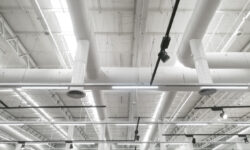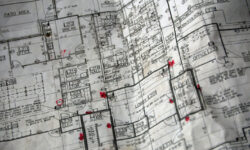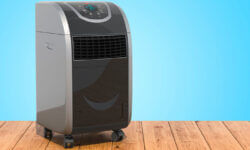When deciding on air zone HVAC systems, the Variable Volume & Temperature (VVT) is an HVAC control system with many advantages. The VVT system overview is a cost effective way for building occupants to maintain & control temperature. Read on to learn how a VVT HVAC system is traditionally constructed and the benefits it can have for your business
Read more →When the Maryland summer starts, heat and humidity should be at the forefront of a building manager’s mind. Managers will often consider the heat but underestimate the humidity. Even without high temperatures, moisture-rich air can negatively affect the workplace. Humidity can cause workers to feel tired and make it hard to breathe, quickly weakening morale. How do offices end up with high humidity?
Read more →Your heating and cooling system may not be the most glamorous part of your building, but when it stops working, it’s definitely the most important! Annual air conditioner maintenance can ensure that you don’t have big, expensive emergency repairs when the temperatures soar. There are four key reasons you should never skip your commercial annual air conditioner maintenance.
Read more →Anyone who owns a commercial building knows that ductwork is an integral part of the property’s operations. In order to operate at maximum efficiency, your HVAC ductwork needs to be designed, sized, and installed correctly. Proper duct size is all too often an overlooked feature of commercial HVAC systems. The role that duct sizing and material play in maintaining a safe, comfortable environment should not be underestimated. Having the right size and material for your ducts will maintain comfortable conditions, improve indoor air quality, minimize energy losses, and lower your heating and cooling bills, as well.
Read more →Buying a new commercial HVAC system is one of the most important purchases you can make for your business. It’s your responsibility to choose an HVAC system that provides seamless comfort for clients, customers, and employees. However, choosing the right commercial HVAC system can be overwhelming with the number of choices to pick from. For this reason, you must understand what factors to consider when looking for a new HVAC system.
Read more →Regular HVAC maintenance in your commercial building is a responsibility you owe to your tenants and employees, but you owe it to yourself, as well. In fact, properly maintained systems can provide up to 25 years of dependable performance. Commercial-grade HVAC equipment such as air conditioners, furnaces, heat pumps, and boilers are very expensive to replace. On the other hand, regular preventative maintenance is relatively inexpensive. From reducing utility costs to improving your air quality, professional HVAC maintenance is financially advantageous and time-saving.
Read more →Data centers represent some of the largest individual electricity users globally, accounting for roughly 3% of all consumption. That number continues to grow year over year. As such, every data center has a responsibility to be as efficient as possible. Much of that efficiency is going to come down to effective data center HVAC design.
Read more →Businesses have different needs when it comes to heating, ventilating, and air conditioning buildings and facilities. What every business has in common, though, is the desire to save money. Commercial enterprises analyzing their HVAC requirements can consider using portable spot air conditioners. Read on to know about these compact air conditioning units and if they’re right for your business.
Read more →In 2015, chilled beam technology was projected to grow nearly double by 2020. Now projections are showing the U.S. will contribute around 28% in chilled beam system demands by 2026. This is largely due to energy efficiency regulations in North America. Currently building energy consumption is about 40% of the total energy consumption in the U.S. As a push toward lower carbon emissions continues to grow, it stands to reason so will technologies that reduce energy consumption. Chilled beams offer major benefits in energy efficiency.
Read more →Chillers use up about 20% of the total power generated in the country. What’s more, they can increase up to 30% additional energy usage of a building due to operational inefficiencies. This costs companies and building facilities billions yearly. Today, commercial buildings install efficient HVAC systems with an aim to improve a building’s sustainability and performance. Which brings us to water-cooled chillers, an essential HVAC component for a wide variety of commercial facilities. Continue on to learn more about water-cooled chillers, and find out if it’s the right choice for your facility.
Read more →









